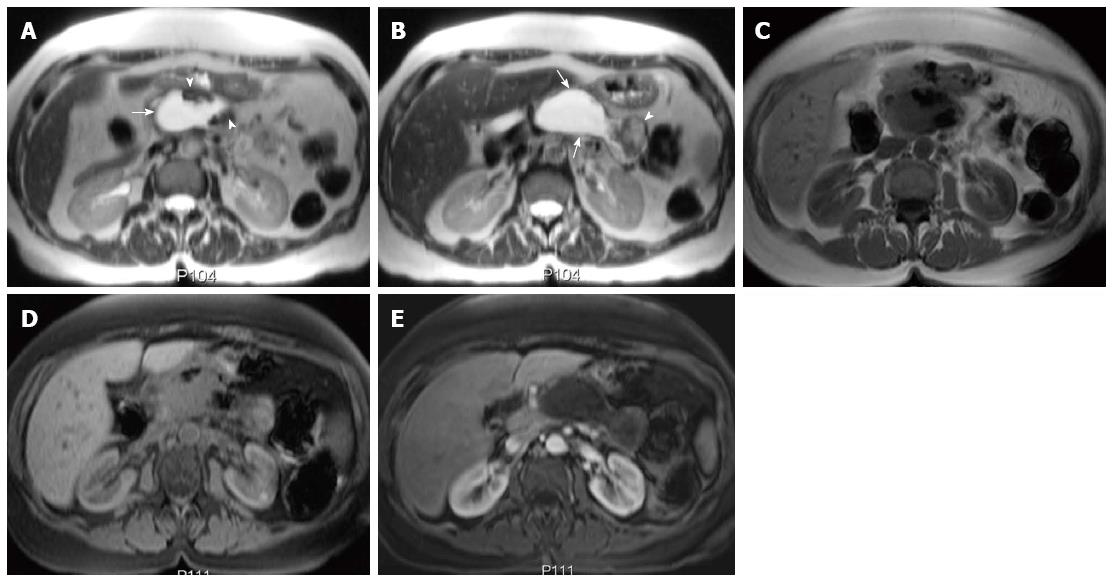Copyright
©2014 Baishideng Publishing Group Inc.
World J Gastroenterol. Oct 28, 2014; 20(40): 14760-14777
Published online Oct 28, 2014. doi: 10.3748/wjg.v20.i40.14760
Published online Oct 28, 2014. doi: 10.3748/wjg.v20.i40.14760
Figure 11 Acute necrotic collection.
A, B: Axial single-shot turbo spin-echo T2-weighted (HASTE) image; C: Axial fast low-angle shot (FLASH) in-phase T1-weighted image; D: Axial FLASH in-phase T1-weighted image with fat-suppression; E: Axial post-Gadolinium 3D-GRE T1-weighted image with fat-suppression during the hepatic arterial-dominant phase. There is a well-defined fluid collection (arrows) replacing a great portion of the pancreatic parenchyma and extending into the peripancreatic tissue, associated with few internal areas of decreased T2 signal intensity (arrowheads) (A); which do not show any appreciable enhancement (B, C) in keeping with acute necrotic collection.
- Citation: Manikkavasakar S, AlObaidy M, Busireddy KK, Ramalho M, Nilmini V, Alagiyawanna M, Semelka RC. Magnetic resonance imaging of pancreatitis: An update. World J Gastroenterol 2014; 20(40): 14760-14777
- URL: https://www.wjgnet.com/1007-9327/full/v20/i40/14760.htm
- DOI: https://dx.doi.org/10.3748/wjg.v20.i40.14760









